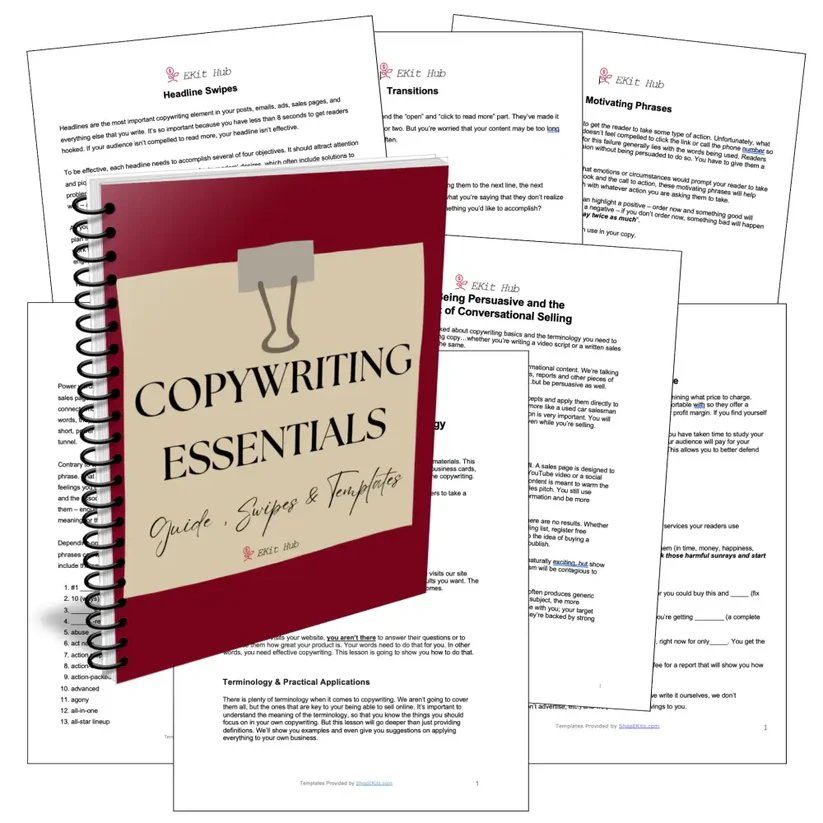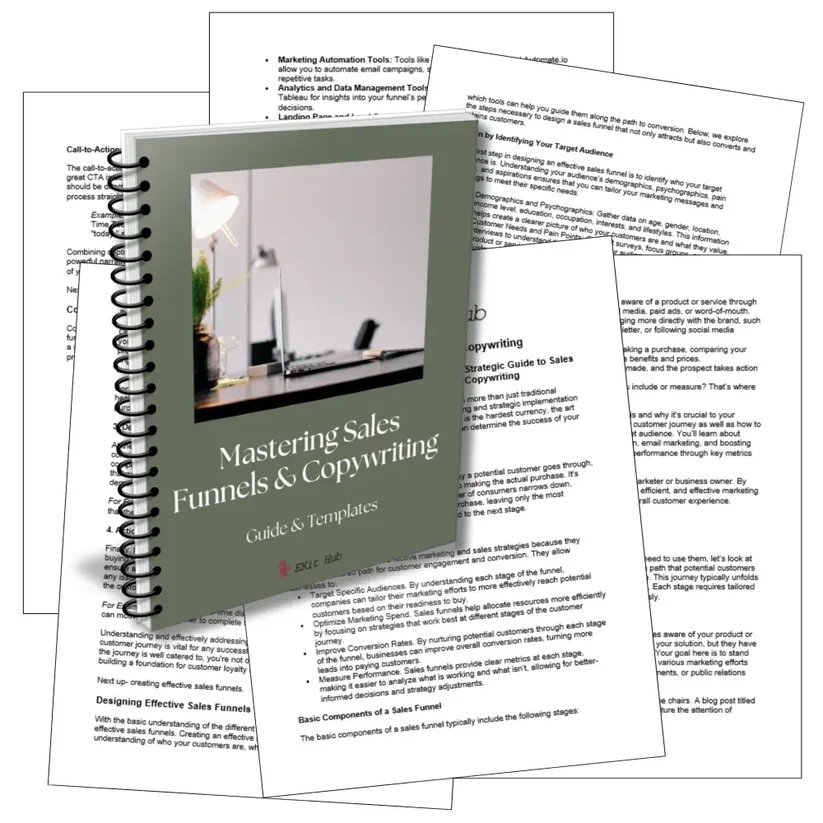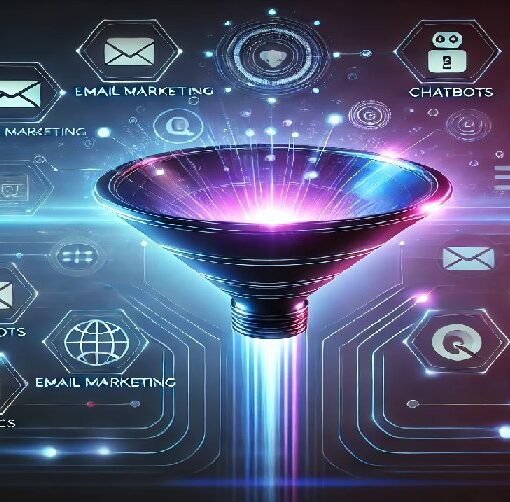Did you know that well-crafted copy can boost your conversion rates by up to 200%? Persuasive copywriting goes beyond just selling; it’s about connecting with people on a deep level. In today’s online world, where competition is fierce, mastering this skill is not just beneficial—it’s essential. Whether you’re a seasoned marketer or a business owner looking to refine your message, this guide provides actionable strategies to craft copy that grabs attention, resonates emotionally, and drives measurable action.

Understanding Your Audience: The Foundation of Persuasion 👤
Identifying Your Ideal Customer 🔍
Creating detailed buyer personas is the cornerstone of effective copywriting. Buyer personas help you pinpoint exactly who your customers are, what they desire, and the challenges they face.
Actionable Steps to Create a Buyer Persona:
- Conduct surveys and interviews with existing customers to gather qualitative insights.
- Analyze customer data for patterns in demographics, behavior, and preferences.
- Develop profiles that outline specific traits, such as age, interests, pain points, and purchasing habits.
Example of a Well-Defined Buyer Persona:
- Name: Sarah, 32, a busy mum who values convenience and quality.
- Needs: Quick meal solutions that are healthy and kid-friendly.
- Pain Points: Limited time for meal prep and a desire for nutritious options.
When you know your audience inside and out, your messaging can address their needs more effectively, fostering trust and increasing conversions.
Analyzing Audience Needs and Pain Points 🌸
Understanding what your audience truly needs—and what keeps them up at night—allows you to create messages that resonate deeply. Brands like Dove successfully address customer pain points by promoting themes of self-esteem and authenticity. You can achieve similar results by:
- Engaging in social listening to uncover recurring frustrations.
- Addressing these pain points directly in your headlines and body copy.
- Offering solutions that align with their priorities and values.
Crafting Compelling Value Propositions 🔝
A value proposition is more than just a catchy tagline; it’s the essence of why your product or service is the best choice for your target audience. It’s a critical tool for persuasion and differentiation in a crowded market.
Essential Elements of a Strong Value Proposition:
- Clarity: Ensure your value proposition is simple and easy to understand.
- Relevance: Address a specific problem or need your audience faces.
- Uniqueness: Highlight what sets you apart from competitors.
Examples of Effective Value Propositions:
- Evernote: “Your notes, synced across all devices.”
- Slack: “Where work happens.”
- FedEx: “When it absolutely, positively has to be there overnight.”
Pro Tip: Use customer testimonials or case studies to back up your claims and add credibility to your messaging.
The Power of Storytelling: Connecting with Your Audience on an Emotional Level 🎩

Using Narrative to Build Trust and Rapport
Humans are wired to respond to stories. They evoke emotions, build connections, and make your message more memorable. Big brands like Coca-Cola have long leveraged storytelling to connect with consumers on a personal level.
Creating Engaging Characters and Scenarios:
- Develop relatable characters that mirror your audience’s own experiences and aspirations.
- Craft scenarios that place these characters in familiar or aspirational situations.
Actionable Tips for Incorporating Storytelling:
- Share authentic customer success stories or testimonials.
- Use anecdotes that evoke empathy and align with your audience’s feelings and values.
- Incorporate storytelling into your email campaigns, landing pages, and social media posts.
Evoking Emotions Through Language and Imagery 🌟
Emotional language is a powerful tool for persuasion. When combined with vivid imagery, it creates an impactful and lasting impression.
Examples of Emotionally Charged Words:
- Transform
- Unleash
- Discover
- Thrive
Pair these words with imagery that supports the message, such as visuals that highlight success, transformation, or joy.
Mastering the Art of Persuasive Language: Words That Sell 🎤
Utilizing Strong Verbs and Active Voice
Active voice and strong verbs make your writing more dynamic and engaging. They convey energy and urgency, prompting readers to take action.
Examples of Weak vs. Strong Verbs:
- Weak: “Used”
- Strong: “Harnessed”
- Weak: “Got”
- Strong: “Achieved”
Employing Power Words and Phrases
Power words create an emotional connection and drive action. Some timeless examples include:
- Free
- Exclusive
- Guaranteed
- Proven
- Limited-time
Pro Tip: Experiment with power words in your headlines, subheadings, and calls to action (CTAs) to see which resonates best with your audience.
The Importance of Clarity and Conciseness
Clear, concise copy eliminates confusion and increases comprehension. Avoid jargon or overly complex language.
Examples of Concise and Clear Writing:
- “Join today and start saving” instead of “Enroll in our program to begin reaping financial benefits.”
- “Shop now for exclusive deals” instead of “Browse our online store to find discounted items available for a limited time.”
Crafting Irresistible Calls to Action (CTAs): Guiding Your Audience to Conversion 🔗

Types of CTAs and Their Effectiveness
A compelling CTA bridges the gap between interest and action. Whether it’s a button, banner, or link, an effective CTA drives results.
Successful CTA Examples:
- “Get started for free!”
- “Download now!”
- “Claim your exclusive offer today!”
Optimizing CTA Placement and Design
Research shows that strategically placed CTAs can dramatically improve conversion rates. Consider:
- Above the fold: Ensure users see your CTA without scrolling.
- Within content: Embed CTAs in relevant sections of your copy.
- At the end: Reinforce your message with a closing CTA.
A/B Testing Your CTAs for Maximum Impact
A/B testing helps you determine which CTAs work best. Test variables like:
- Button colors (e.g., red vs. green).
- Text phrasing (e.g., “Sign up” vs. “Join now”).
- Placement on the page.
Optimizing Your Copy for Search Engines and User Experience (SEO) 🔎
Keyword Research and Integration
Effective keyword integration ensures your content ranks well in search engines while maintaining readability. Use tools like Google Keyword Planner or Ahrefs to find relevant terms, and weave them seamlessly into your copy.
On-Page Optimization Techniques
Optimize these key elements for better visibility:
- Title Tags: Include your primary keyword and make it enticing.
- Meta Descriptions: Summarize your content in a way that encourages clicks.
- Headers: Use H1, H2, and H3 tags for clear structure.
User Experience (UX) and Copywriting
Good UX makes your content accessible and enjoyable. Design your layout with the reader in mind by:
- Using bullet points and numbered lists for readability.
- Incorporating whitespace to avoid overwhelming readers.
- Ensuring mobile responsiveness.
Conclusion 🌟
In summary, mastering persuasive copywriting involves understanding your audience, leveraging storytelling, employing persuasive language, crafting irresistible CTAs, and optimizing for SEO. Each of these elements works together to create copy that captivates, resonates, and converts.
Action Steps:
- Develop detailed buyer personas to guide your messaging.
- Focus on storytelling and emotional language to connect deeply with your audience.
- Test and refine your CTAs while integrating SEO best practices to boost visibility.
For further learning, explore top-rated books on copywriting, join webinars, or enroll in specialized courses. Ready to take your copy to the next level? Start implementing one strategy today, and watch your results transform. ✨
Affiliate Disclaimer: This article may contain affiliate links, meaning I earn a small commission at no additional cost to you if you make a purchase through these links. Thank you for supporting the content on this site! 😊
Why These Resources Are Game-Changers for Your Marketing Success 🚀
Copywriting Essentials: Guide, Swipes & Templates

Unlock the secrets to creating persuasive copy that resonates and converts. Whether you’re writing headlines, crafting sales pages, or creating email campaigns, this comprehensive guide provides:
- Proven Headline Swipes: Save time and boost engagement with ready-made headline templates.
- Motivating Phrases: Learn the language that inspires action and drives results.
- Conversational Selling Techniques: Communicate authentically while closing more deals.
- Practical Applications: Apply these templates directly to your marketing materials for instant improvement.
💡 How You’ll Benefit:
Transform your writing process and create compelling content with ease. You’ll save hours of brainstorming while elevating your marketing materials to professional levels.
📌 “Don’t let another opportunity slip by. Click here to grab your copy of the Copywriting Essentials guide today and start writing copy that sells!”
Mastering Sales Funnels & Copywriting: Guide + Templates

Streamline your sales funnel creation and supercharge your copywriting skills with this strategic resource. Inside, you’ll discover:
- Sales Funnel Design Strategies: Map out customer journeys that convert leads into buyers.
- Proven Copywriting Templates: Take the guesswork out of crafting sales-driven content.
- Automation Tools & Techniques: Save time while delivering a seamless experience for your audience.
- Audience Targeting Insights: Customize your approach to resonate with different customer segments.
💡 How You’ll Benefit:
Learn to craft end-to-end marketing funnels that not only attract but also retain customers. With actionable insights and plug-and-play templates, you’ll see tangible results in no time.
“Ready to build funnels that work for you around the clock? Download Mastering Sales Funnels & Copywriting today and start converting leads like a pro!”
By investing in these resources, you’ll not only sharpen your skills but also gain tools that simplify and elevate your marketing efforts. Act now to take the first step towards transforming your business and achieving your goals.



